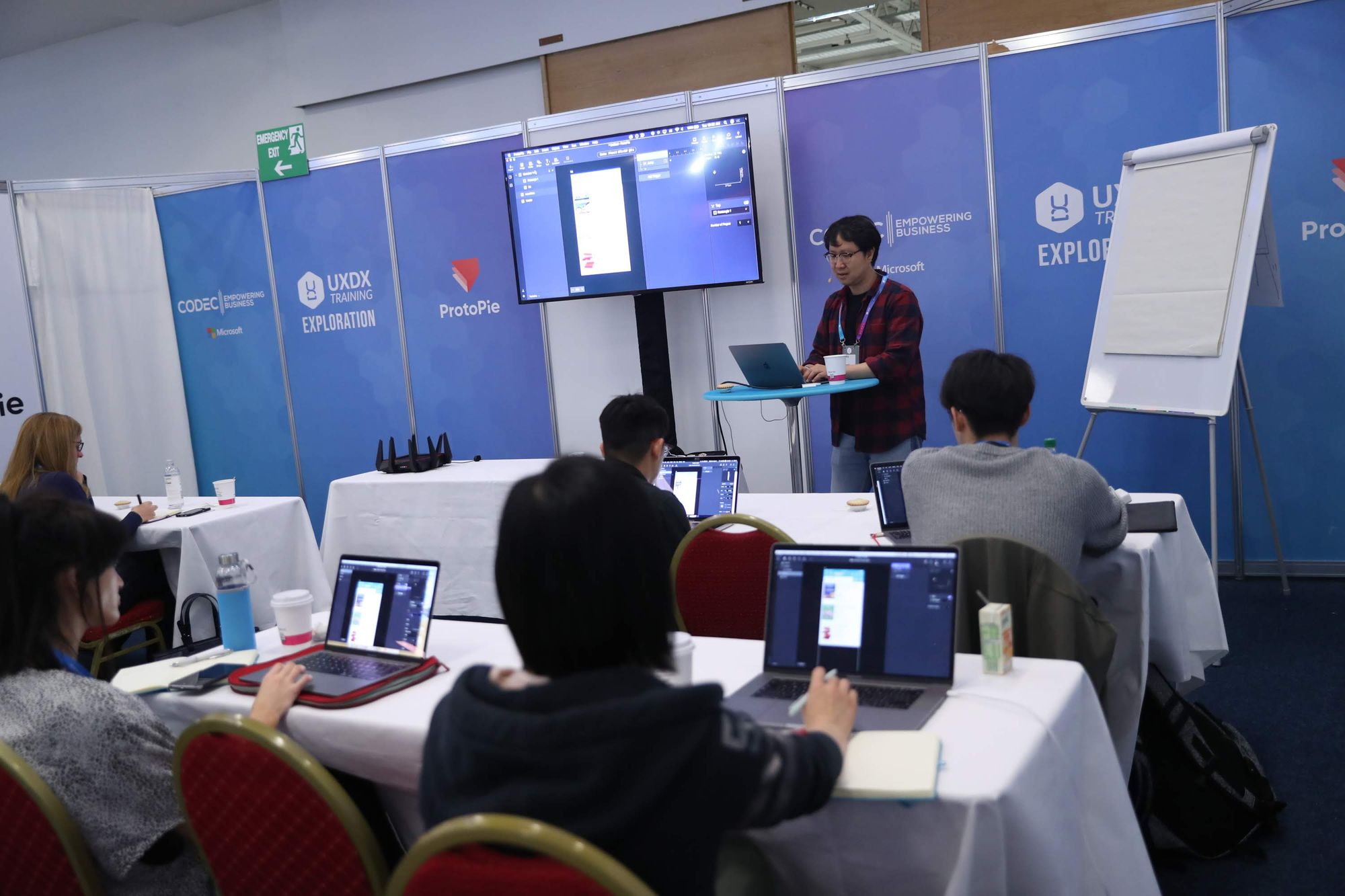10 tips for running a hybrid workshop
The best workshops take advantage of the medium that they use - but what if you are using two mediums - in-person and online? We look at the top 10 tips for running a hybrid online and in-person workshop.

Online workshops took off during the pandemic as everyone was forced to work remotely and adapt to the new normal. Some people just replicated in-person workshops but the best workshops took advantage of the new medium to rethink how to run the workshop. But as the pandemic recedes and people are returning to in-person activities, this leaves some options open as to the best way to run workshops going forward.
It would be a shame if we lost all of the learning that we have gathered after two years of running online workshops and reverted to in-person only. At UXDX, we firmly believe that hybrid options are the way forward. One of the benefits of in-person is that new environment can aide learning because people are multi-sensory so being in a new space helps to reinforce new memories. The benefit of online is that it enables people to attend workshops they otherwise wouldn't due to the time and cost of travel.
We run hybrid workshops at all of our UXDX conferences so we put together the following 10 tips to help facilitators make the most of hybrid workshops.
1. Facilitation
Once one person is remote, everyone is remote. Therefore, even if people are in the room, everyone should have a computer and interact via the computer. This means that even the in-person attendees should have a computer and headphones.
But that doesn't mean that the experience needs to be the same. By setting up a camera with a wide view the presenter can look around the room when talking and gesticulate a bit more. They are still constrained to the desk for the microphone but the people in the room get a more in-person style experience, while still ensuring high quality for the online audience.
2. Minimum of two moderators
You need a minimum of two moderators to run a hybrid workshop. One person will be presenting, and can typically pick up questions arising in the room. The second person will be responsible for monitoring the online audience.
Pro-tip
Ask people to update their names in the streaming software to indicate whether they are in-person or online. This will help moderators whenever a question arises as well as for managing activities.
3. Keep it short
People have limited attention spans when staring at a computer. We've found that 2 hours seems to be the sweet spot of keeping people engaged and being sufficient to learn a new topic.
4. Ensure that your approach matches your goal
People need a mix of instruction and hands on experience to learn something. Content should be split between concepts (introducing something new) and activities (getting hands on). The workshop should follow a regular cadence of jumping between introducing a new concept and getting people to get hands-on with trying it out for themselves.
Anti-pattern
There is a danger when trying to teach something that the tool being used takes too much prominence. A good workshop should be agnostic of the tool used. You may use a specific tool to demonstrate the task but you must be conscious to avoid the workshop becoming a demo. The goal needs to remain on helping people to understand how to do a particular task and the reasoning why.
5. Favour activities over lectures
Keep the introduction to each new concept short, typically no more than 5 to 10 minutes. You should aim for 4 - 6 concepts in each workshop to ensure that people have sufficient time to dive deep into the activities, review approaches and ask questions.
6. Have multiple activity options
The design of the activities is what makes or breaks a workshop. There is no case study that will be relevant to everyone. What I have found successful is to have 2 or 3 case studies ready and allow attendees to work on the one that resonates best with them. This requires more upfront work for the facilitators but it helps people to see the principles in play across multiple contexts, which aids in overall understanding.
Anti-pattern
I thought it would be useful to let attendees choose a topic from their own company to run in a workshop. The intent was that this would be more tangible and beneficial for the attendees. In practice, we lost a lot of time because the attendees hadn't thought of a good case study. It is not your customers job to tell you what to build - that is up to you!
7. Split online and in-person groups
A lot of activities require group work, but this becomes more difficult when people are both in the room and online. For group activities we recommend that you separate the groups. Create groups of people who are in-person together and create groups of people who are online. This gives more value to the in-person attendees. who have made the effort to be in the room.
Pro-tip
You don't want to be creating manual groups in the middle of a session. You can either pre-plan and create groups ahead of time based on your understanding of whether people will be in-person or online. Alternatively you can automatically create groups hoping for an even distribution across online and in-person attendees. (The in-person people just wont show up to the online groups). Either way your online moderator will need to ensure that groups have enough participating attendees and, if not, then move people between groups.
8. Work separately, then together
Group think is incredibly powerful and people converge on answers remarkably quickly. To ensure that each person is getting value from an activity I recommend that the first few minutes of every activity be allocated to individual work. This gives people time to process what they heard and apply it as they understand it.
After a few minutes ask people to share their separate work with their group and discuss it. This will result in more diverse responses for teams to review and help to improve the understanding for everyone.
8. Interaction
People will have questions. Be explicit upfront on whether you want people to wait until a section is complete before taking questions or you're happy for people to interject at any time.
A moderator can easily see a person in the room with their hand up but the online attendees are less visible. The online moderator needs to monitor questions from the online attendees and either respond if they know the answer or get the attention of the presenter whenever a relevant question is being asked.
9. Instant Feedback
People don't just learn by doing - feedback cycles are equally as important. You should plan 5 to 10 minutes after each activity to review the work that teams have done and give immediate feedback. Always remember to provide constructive feedback so that people can learn from it.
Pro-tip
Some people might be sensitive to their work being criticised. It is good to tackle this upfront to put people at ease.
I will be reviewing the output of the activities to help people identify common mistakes and to ensure that people are learning the concepts. This means that I may critique your work but please do not take this as an insult or an attack on you. Nobody is perfect in their first attempts at something new but you grow by tying. I personally have messed up on these topics a lot over the years but constructive criticism is what helped me to learn. Please let me know if you still feel uncomfortable and I will try to facilitate your as best I can.
10. Have Fun
People aren't two dimensional beings. Memories form best when unexpected things arise. So feel free to add a bit of levity and uniqueness to your workshops to keep people smiling and engaged.
Hopefully these 10 tips will help you to create better and more engaging hybrid workshops. Let me know if you have any ideas from hybrid workshops that you have run or attended as I am always keen to learn more and to keep improving outcomes for our workshop attendees.
